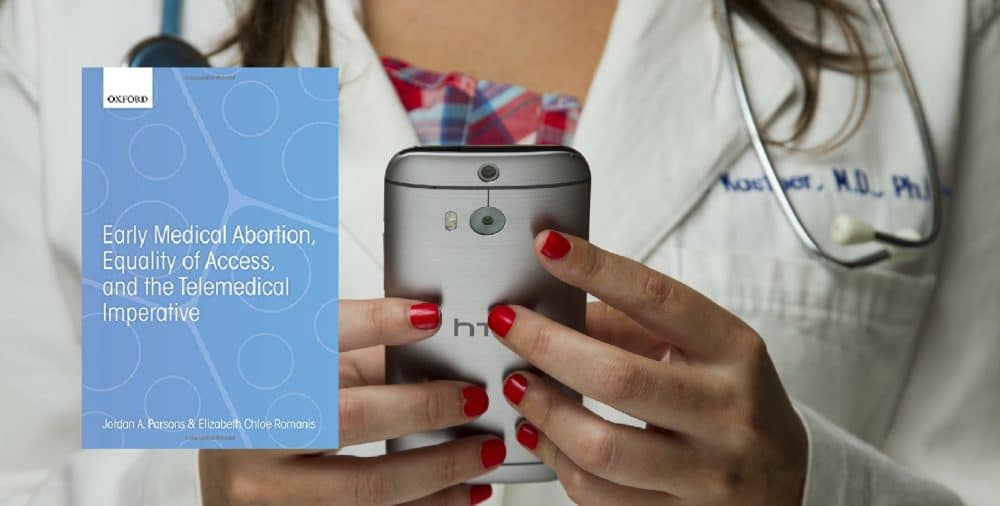 Andrew Papanikitas is deputy editor of the BJGP, a locum GP. and a medical educator in Oxford. He is on Twitter: @gentlemedic
Andrew Papanikitas is deputy editor of the BJGP, a locum GP. and a medical educator in Oxford. He is on Twitter: @gentlemedic
As its title implies, Early medical abortion, equality of access, and the telemedical imperative, is not intended for the casual reader, though this can be debated.
It is an exploration of both early medical abortion and telemedicine through the lenses of clinical evidence, social developments and legal policy, focusing on the United Kingdom and United States of America. In this book Parsons and Romanis start from a position of abortion being lawful in at least some circumstances (this being the case in the UK in the USA), and of early medical abortion using mifepristone and misoprostol in the first 10 weeks of pregnancy being an approved method.
They develop the arguments for telemedical early medical abortion as an additional service alongside in-person provision. They are open about their pro-choice position and their support for decriminalisation of abortion, which is ostensibly their inspiration for writing the book. They argue that abortion is essential healthcare, but this book also serves as an essential update on what telemedical early abortion (TEMA) services look like in practice.
The book will be of interest to those who have a role or policy-interest in early medical abortion services, including clinicians who work or interact with those services and clinical commissioners. In the first instance it will be of interest, regardless of the reader’s perspective or stance on abortion, on the evidence base for TEMA and TEMA as a case study of telemedicine applied to a clinical service.
In both the UK and the USA, for example, abortion is ‘exceptionalised’ – distinguished from other forms of healthcare.
The authors illustrate this in their examination of policy development in the UK and the USA before and during the onset of the COVID-19 pandemic. In both the UK and the USA, for example, abortion is ‘exceptionalised’ – distinguished from other forms of healthcare. In the UK this is the result of abortion’s special status as a crime, which has provided only a doctor with a defence when providing care in line with certain conditions set down in legislation. The issue of TEMA only being permitted in a particular time-frame also has implications. In the age of COVID-19, an isolation period mandated by public health rules can mean that a pregnant person is unable to access an in-person service in time.
They also consider this as a case study of telemedical services. The telemedical imperative is the drive to promote the benefits of telemedicine. These include addressing health inequalities, improving healthcare efficiency, and enhancing autonomy of service-users. This drive has received a major boost in 2020 for obvious reasons. However, and notably in the case of TEMA, the telemedical imperative precedes the pandemic by decades.
The telemedical imperative …. has received a major boost in 2020.
Benefits of a telemedical approach cited include improved ability to ask questions, decreased financial cost of accessing services, improved privacy, and increased disruption due to travel. Parsons and Romanis also flag the potential for digital social exclusion as a result of telemedical provision, recent research demonstrating that the larger portion of patients using a TEMA service were older, more educated, and white. They also discuss the issue of telemedical services and geographical borders between states with differing stances on abortion.
The authors are at pains to emphasise that telemedicine is best implemented in addition to in-person care rather than as a total replacement. They suggest that there ought to be a telemedical ‘continuum’ with patients able to enter and exit a telemedical option according to need and acceptability. There should not be a choice of one or the other. They also emphasis two levels of safety that any telemedical service should maintain: The intervention should be safe and effective as an in-person service, and the telemedical delivery should not compromise safety.
The authors’ view of the telemedical imperative is consistent with both current rhetoric in politics about access to in person care and choice regarding telemedical options for healthcare services, as well as the drive to offer distanced care in the wake of COVID-19. Whilst unashamedly in proposition, this text offers both a useful update and explanation of how the current services have developed.
Featured Book
Jordan A. Parsons and Elizabeth Chloe Romanis. Early medical abortion, equality of access, and the telemedical imperative. OUP, Published: 30 September 2021, £39.99 Paperback 240pp. ISBN-13: 978-0192896155
Featured image by National Cancer Institute at Unsplash






